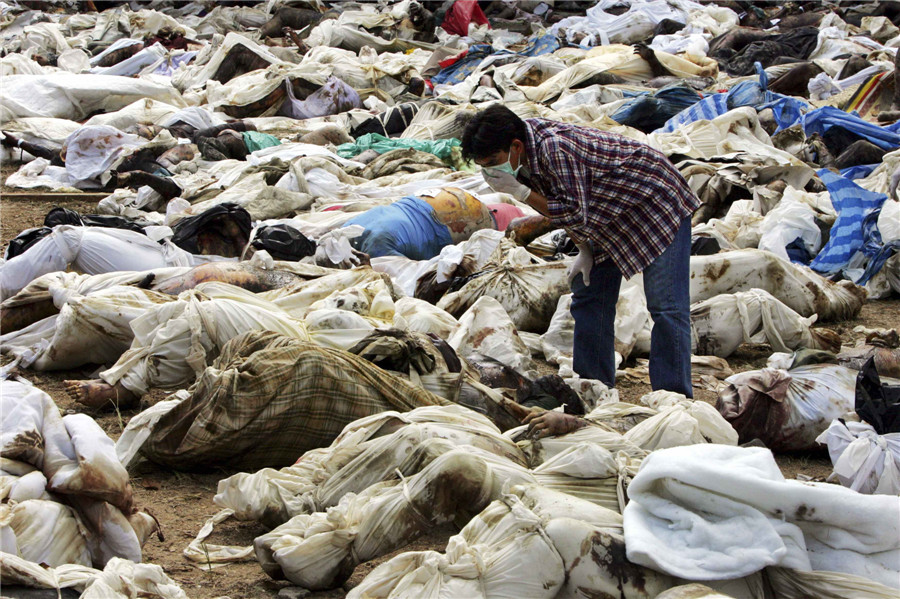 |
|
A Thai man searches for his relative amid hundreds of corpses in a temple off the coast of Ban Muan in this December 29, 2004 file photo. On December 26, 2004, a magnitude 9.15 quake off the coast of Indonesia's Aceh province triggered an Indian Ocean tsunami that killed around 226,000 people in Indonesia, Sri Lanka, India, Thailand and nine other countries. [Photo/Agencies] |
"SAVED BY CHANCE"
In Indonesia, where at least 168,000 people died in Aceh province in 2004, the warning and evacuation system is beset by bureaucratic infighting.
"Of course I'm worried. I'm hoping there is no tsunami again," said Mochammad Riyadi the head of the Earthquake and Tsunami Centre at Indonesia's Meteorology and Geophysics Agency (BMKG).
Aceh provincial authorities have resisted calls to conduct monthly sound checks of the six sirens in operation, despite their failure in 2012, Riyadi said.
The BMKG has also tried for the past seven years to hand control of the warning system to the local government, but has been rebuffed, he said.
Local authorities dispute this account. The head of Aceh's disaster agency, Said Rasul, said the BMKG should be doing the tests.
"If the BMKG wants to hand over management of the tsunami sirens, then they have to give us the human resources," he said.
Building standards in Indonesia, including Aceh, are also still dangerously below par, said Jonatan Lassa, a research fellow at Singapore's S. Rajaratnam School of International Studies.
The 2012 alarm showed people did not trust the warning system, he added.
"People were saved by chance, by the tsunami not happening, and not by the warning system," he said.
Some communities have also been rebuilt in particularly vulnerable coastal areas.
"Should there be a tsunami, I think the impact will be the same (as 2004)," Lassa said.